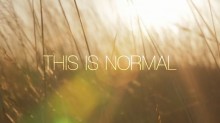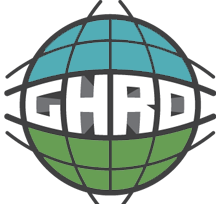Water and Sanitation in America
Access to adequate, sanitary drinking water and proper sanitation facilities is a prevalent and critical issue in Africa. The sub-Saharan regions of Africa are prone to a physical lack of water from droughts, which leads to water stress in many areas. In addition to a physical water scarcity in these regions, this issue stems from economic hardship, because too often, there is inadequate funding toward sustainable water sourcing in Africa. This page explores causes, solutions, and impacts created by the human rights issue of water and sanitation in Africa.
- Amref Health Africa
- Water For People
Sources to Consult
- https://thewaterproject.org/why-water/health
- https://waterfortheages.org/water-films/
- http://greentumble.com/water-scarcity-in-africa-issues-and-challenges/
- https://www.iied.org/african-governments-signing-away-water-rights-for-decades
- http://goinggreenrecyclingnigeria.org/clean-water-scarcity-in-sub-saharan-africa/
- https://papers.ssrn.com/sol3/papers.cfm?abstract_id=874833
- https://www.waterforpeople.org/what-we-do
- https://www.usaid.gov/sites/default/files/documents/1860/WASH%20Program%20August%202014.pdf
- http://www.wateraid.org/where-we-work/page/rwanda
- https://www.water-for-africa.org/en/water-shortage/articles/more-people-need-more-water.html
- http://www.worldcat.org/title/solutions-to-access-safe-and-drinking-water-in-africa/oclc/974567642
“A Snapshot of Sanitation in Africa” https://www.unicef.org/wcaro/wcaro_SnapshotSanitationAfrica_En.pdf This report, created by UNICEF and the World Health Organization, gives many graphics about the current status of sanitation in Africa. Some of the statistics include percentages of Africa by region that have access to improved sanitation facilities, and what regions are on track to meet the MDG sanitation target. This is an important resource because it breaks down current statistics in a visual and accessible format. “Access to Water in the Slums of Sub-Saharan Africa” http://onlinelibrary.wiley.com/doi/10.1111/j.1467-7679.2011.00543.x/full This academic article discusses the economic side of the water crisis in Africa. Authors Dagdeviren and Robertson discuss how due to the economic situation of Africa where two-thirds of the urban population are poor, market-based solutions to improving water resources in sub-Saharan Africa are infeasible. This article argues the merits of small-scale community-led initiatives to improving access to water in the population. Amref Health Africa http://amref.org/amref/en/info-hub/strategic-direction-three/strategic-direction-four/ Amref Health Africa is an NGO that is currently working on several strategic goals in Africa, one of which is improving water and sanitation. This webpage has an embedded video that depicts some of Amref’s work with providing water in Magadi, Kenya. “Dear Water: You Are A Blessing” https://www.youtube.com/watch?time_continue=59&v=A_FTqaOTj74 This YouTube video, entitled “Dear Water: You Are A Blessing” is of the recitation of a poem written by Kenyan schoolgirls who were recently provided with clean drinking water in their community. This video was created by World Vision, a humanitarian aid organization that works with many issues, including providing clean water and sanitation to under-developed countries. This source is different from other sources dealing with this human rights issue, because it focuses on the joy and hope that water can provide, instead of on the tragedy of its absence. This Is Normal https://www.water4.org/this-is-normal/ The short documentary This Is Normal seeks to define African water scarcity in common terms. This film depicts the daily journeys of people suffering from this issue to locate and bring back water, which is often contaminated. The film depicts the hardships of unreliable water, but it also proposes solutions to water scarcity in Africa, such as teaching entrepreneurs in Africa how to drill their own wells. “Water for All: Improving Water Resource Governance in Southern Africa” http://www.jstor.org/stable/resrep01811?Search=yes&resultItemClick=true&searchText=Africa&searchText=water&searchText=rights&searchUri=%2Faction%2FdoBasicSearch%3Fed%3D%26amp%3Bfacet_research_report%3DcmVzZWFyY2hfcmVwb3J0%26amp%3BQuery%3DAfrica%2Bwater%2Brights%26amp%3Bsd%3D%26amp%3BsearchType%3DfacetSearch%26amp%3Bpage%3D1&refreqid=search%3A76fdcf8c6a5d5df636cb399eb8f937b3&seq=1#page_scan_tab_contents This research report discusses how to get those affected by lack of access to clean water involved in the process of water resource management. The author draws on places such as South Africa and Zimbabwe where water resource management has improved to discuss how best to go about improving access in other water-stressed countries. The report also mentions the practical issues involved with improving water management in water-stressed countries such as financial cost and conflicting interests between stakeholders. “Water ‘Haves’ and ‘Have Nots’: Why Water Scarcity is a Human Rights Issue” https://www.hrw.org/news/2016/10/12/water-haves-and-have-nots-why-water-scarcity-human-rights-issue This news article, which was published in the Brisbane Times and then posted on Human Rights Watch, discusses why access to clean drinking water is a fundamental human right. This article is not specific to water scarcity in only Africa, but does discuss climate change and regional development projects that may contribute to water scarcity in Africa. Human Rights Watch is an NGO that advocates for worldwide human rights, and has many other resources available on the website. Water is life: women’s human rights in national and local water governance in southern and eastern Africa http://www.worldcat.org/title/water-is-life-womens-human-rights-in-national-and-local-water-governance-in-southern-and-eastern-africa/oclc/944156410 Anne Hellum’s book discusses the issue of access to water and sanitation from a gendered perspective. Though access to sanitary water is a problem for all people in water-stressed countries, lack of rights and participation in governance can make the problem much more severe for women. Hellum also discusses how water laws in many African countries make the poor and vulnerable much more susceptible to being excluded from access to safe water since there are no rules protecting them from exploitation from those controlling the water. “Water Scarcity” http://www.un.org/waterforlifedecade/scarcity.shtml This source details the United Nations’ International Decade for Action of 2005 to 2015 regarding water access for all people. This article describes the various effects of access to clean water and how lack of access can cause more problems than just dehydration and poor crop yields. The United Nations also defines the difference between the terms water-stress and water-scarcity here in order to further the discussion on why sub-saharan African populations are so susceptible to being cut off from improved water sources. “World: Access to safe drinking water” http://reliefweb.int/map/world/world-access-safe-drinking-water This map shows the countries most affected by water scarcity in the world and can shed light on why sub-saharan African populations are most commonly impacted by a lack of access to clean water. This map shows that a significant amount of the countries whose populations are greatly impacted by a lack of access to wlater are situated in sub-saharan Africa.

